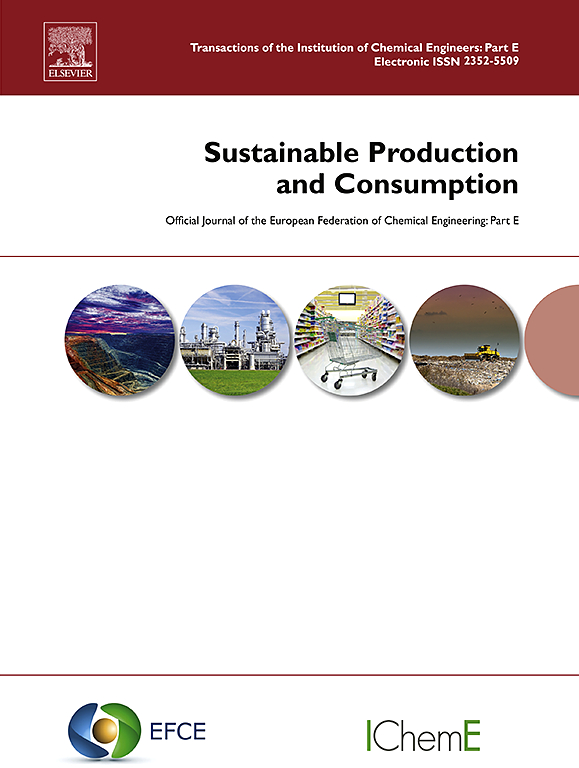Global nutrient content embedded in food losses and waste: Identifying the sources and magnitude along the food supply chain
IF 10.9
1区 环境科学与生态学
Q1 ENVIRONMENTAL STUDIES
引用次数: 0
Abstract
Reducing food losses and waste (FLW) can contribute to improving nutrient availability to meet the nutritional needs of the global population. Identifying foods that contribute most to nutrient content in FLW is crucial for developing effective strategies to reduce FLW. Here, we assessed the current literature for quality and consistency of FLW data, and then evaluated the quantity of nutrients that are wasted as a consequence of FLW, identifying the primary food sources contributing to this on a global scale. Several FLW definitions and quantification methods were identified in the literature, making it difficult to compare FLW data and estimates of nutrient content in FLW between existing studies. The nutrient content in global FLW was determined for 29 nutrients from 99 food commodities with the DELTA Model®, after which the contribution of each food group to the nutrient content of FLW was calculated. An indicator was developed to assess the potential impact of resolving FLW on global nutrient availability. Nutrient content in FLW was highest for phosphorus (69 % of global requirement), tryptophan (62 %), thiamine (61 %), methionine (58 %) and histidine (54 %). For 17 out of 29 nutrients, >40 % of the global requirement was embedded in FLW. Cereals contributed most to nutrient losses, followed by fruits and vegetables. According to the indicator, rice, wheat, vegetables, maize, and milk provided the greatest opportunity for increasing nutrient supply via reduction of FLW, due to the combination of waste rates and nutrient density. Our findings highlight the importance of broadening FLW research beyond food mass to incorporate nutritional aspects as important indicators, and to identify key food items to reduce FLW for the improvement of nutrient availability.
食物损失和浪费中蕴含的全球营养成分:确定食品供应链的来源和规模
减少食物损失和浪费(FLW)有助于提高营养供应,满足全球人口的营养需求。确定哪些食物对食物损耗和浪费中的营养成分贡献最大,对于制定减少食物损耗和浪费的有效策略至关重要。在此,我们评估了现有文献中 FLW 数据的质量和一致性,然后评估了因 FLW 而浪费的营养素数量,确定了全球范围内造成浪费的主要食物来源。在文献中发现了几种 FLW 定义和量化方法,因此很难比较现有研究中的 FLW 数据和 FLW 中营养素含量的估计值。利用 DELTA Model® 确定了全球 FLW 中 99 种食品中 29 种营养素的含量,然后计算了每种食品对 FLW 营养素含量的贡献。制定了一项指标,以评估解决 FLW 问题对全球营养素供应的潜在影响。在 FLW 中,磷(占全球需求量的 69%)、色氨酸(62%)、硫胺素(61%)、蛋氨酸(58%)和组氨酸(54%)的营养素含量最高。在 29 种营养素中,有 17 种营养素的全球需求量的 40% 来自于 FLW。谷物造成的营养损失最大,其次是水果和蔬菜。根据该指标,大米、小麦、蔬菜、玉米和牛奶由于浪费率和营养密度的综合因素,为通过减少 FLW 来增加营养供应提供了最大的机会。我们的研究结果凸显了扩大食物浪费损失研究的重要性,不仅要研究食物质量,还要将营养方面作为重要指标,并确定减少食物浪费损失的关键食品,以提高营养供应。
本文章由计算机程序翻译,如有差异,请以英文原文为准。
求助全文
约1分钟内获得全文
求助全文
来源期刊

Sustainable Production and Consumption
Environmental Science-Environmental Engineering
CiteScore
17.40
自引率
7.40%
发文量
389
审稿时长
13 days
期刊介绍:
Sustainable production and consumption refers to the production and utilization of goods and services in a way that benefits society, is economically viable, and has minimal environmental impact throughout its entire lifespan. Our journal is dedicated to publishing top-notch interdisciplinary research and practical studies in this emerging field. We take a distinctive approach by examining the interplay between technology, consumption patterns, and policy to identify sustainable solutions for both production and consumption systems.
 求助内容:
求助内容: 应助结果提醒方式:
应助结果提醒方式:


